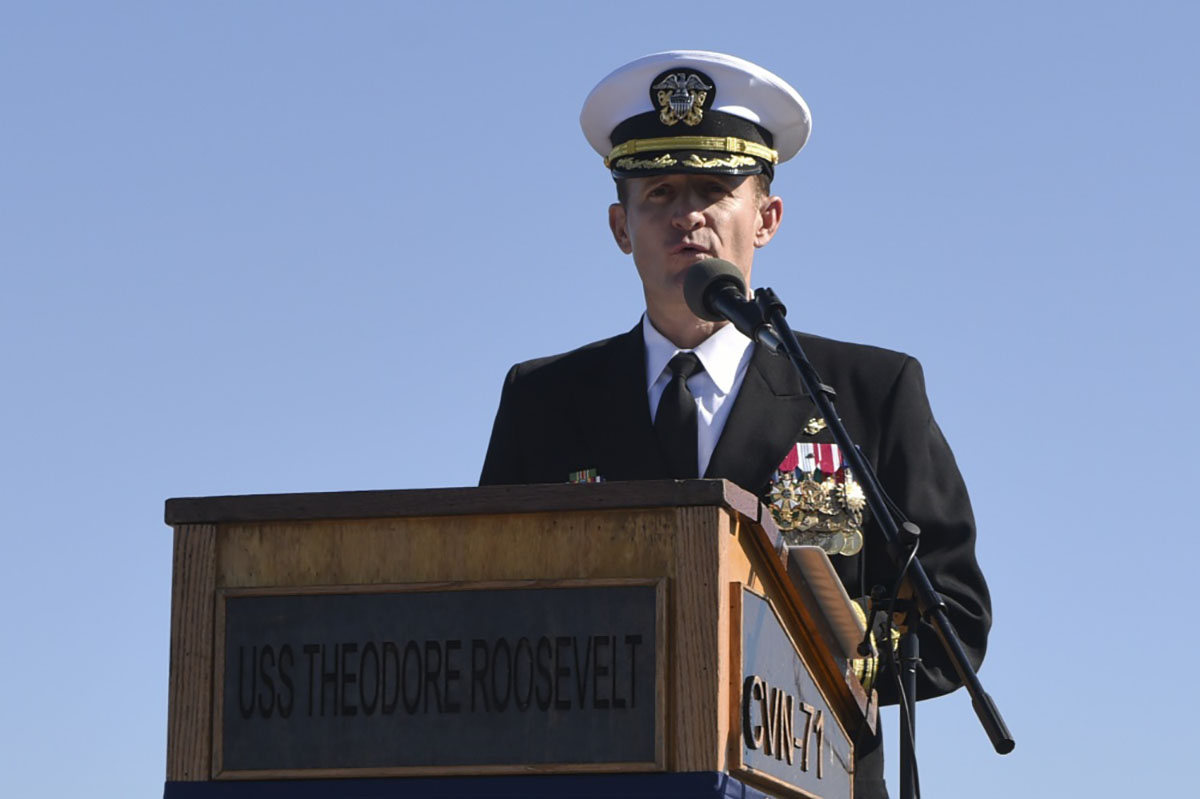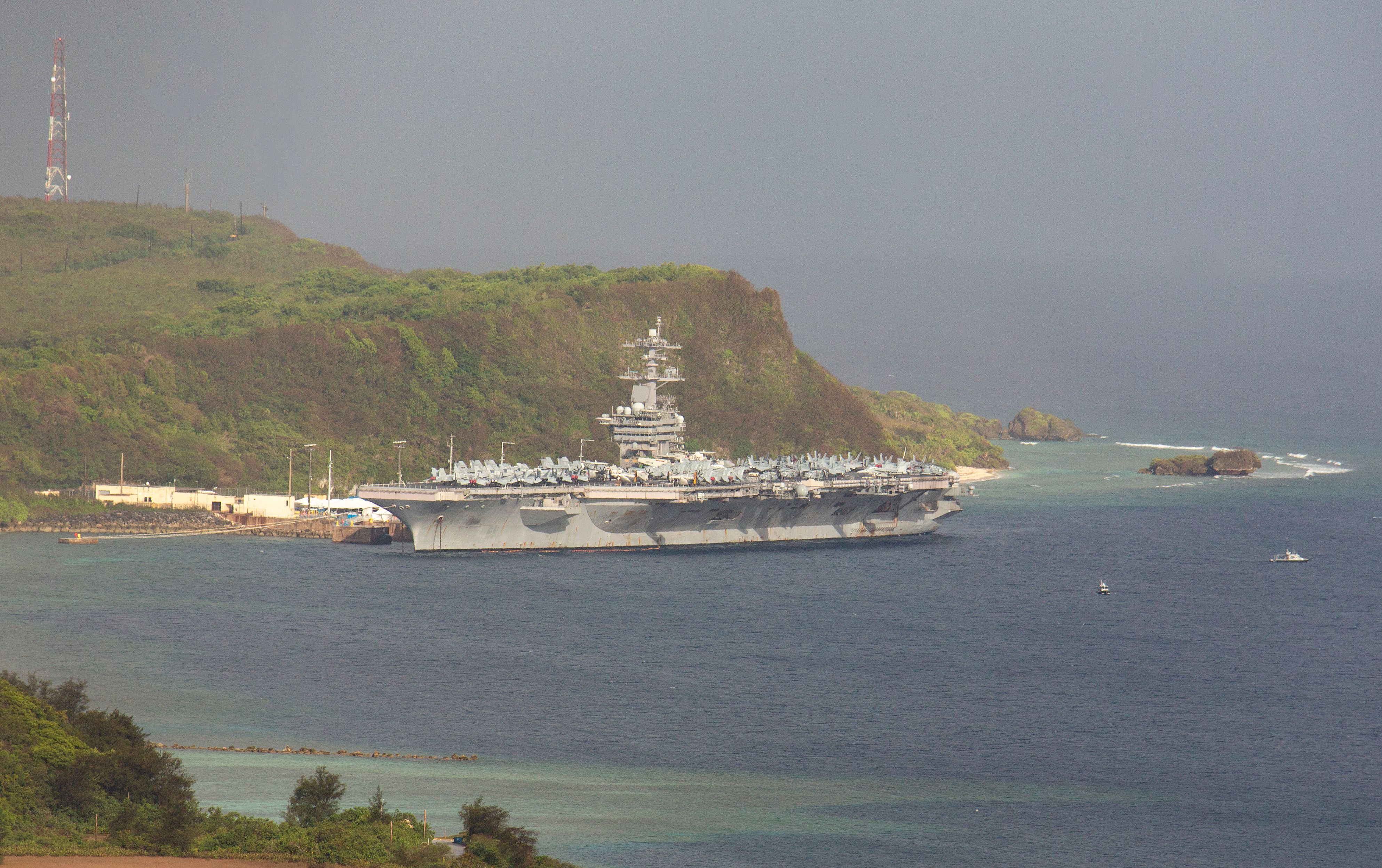A U.S. Navy aircraft carrier sidelined in March when more than 1,000 of its sailors tested positive for COVID-19 pulled into Naval Base San Diego on Thursday, ending a tumultuous deployment to the Indo-Pacific.
The Nimitz-class aircraft carrier USS Theodore Roosevelt (CVN 71) has been on deployment for nearly 6 months. More than 6,000 sailors from Theodore Roosevelt Strike Group and embarked Carrier Air Wing (CVW) 11 deployed from San Diego on Jan. 17 to conduct routine operations and maintain security in the region.
Unlike typical homecomings, sailors did not see a line of cheering friends and family awaiting their arrival on Naval Base San Diego as the ship pulled into port Thursday morning.
"It was a sombering feeling seeing that we didn’t have our families out here after we’ve gone for so long," said an emotional Air Traffic Controller First Class Daniel Adam Wright, who has been assigned to USS Roosevelt for three years.
The change was issued as a safety precaution due to the novel coronavirus and was a stark reminder for sailors of a deployment that was anything but routine.
More on USS Roosevelt
In early March, USS Roosevelt was hit with an outbreak of the novel coronavirus. More than 1,000 sailors on board tested positive for COVID-19 and one sailor died in what was the most extensive and concentrated spread of the virus across the U.S. military.
The aircraft carrier had to pull into Guam ahead of a scheduled port visit so the infected crew could quarantine. The Navy said half of the crew of 4,800 was moved off ship to quarantine at various locations in Guam, while enough sailors were kept on board to keep the ship secure.
During their quarantine, sailors were isolated and needed to find innovative methods to stay connected, USS Roosevelt Commanding Officer Capt. Carlos Sardiello said.
"We started applying things where we could do physical fitness with social distancing and morale events on board; bingo night, the other night; we did a lot of TV shows," Sardiello said. "I did a lot of taping in private, and we would stream that for the crew. So really, the bottom line is staying connected just like the families are doing back home.”
The outbreak put the ship out of commission for two months and exploded into one of the biggest military leadership crises of recent years.
But Sardiello insisted the U.S. Navy handled the outbreak correctly.
"It’s a wait-and-see with COVID. Is it going to develop or not? And it didn’t. We absolutely stopped it in its track," he said on the ship's return.
Capt. Brett Crozier, who commanded the Roosevelt when the outbreak began, sent an email to several commanders raising alarm that sailors on the ship needed to be quarantined to stop the spread of the virus. The email was leaked to the media and his plea for help, begging for faster action to protect the crew, made headlines.
“We are not at war. Sailors do not need to die,” said Crozier, in a memo obtained by The Associated Press. “If we do not act now, we are failing to properly take care of our most trusted asset, our sailors.”
In early April, Crozier was relieved of his command.
His dismissal upset the carrier’s crew; when Crozier walked off the ship, the crew cheered and applauded their former commander.
Sailor Wright on Wednesday was one of those sailors praising his former captain.
“Sir, if I could say anything to you, it’d be ‘Thank you. Thank you for noticing a problem onboard the ship and a problem that was affecting your crew and thank you for taking the action necessary to get us the assistance required,'" Wright told San Diego media.
Sardiello took over USS Roosevelt and the Navy launched an internal investigation into the spread of the coronavirus aboard the Roosevelt and the controversial firing of its skipper.
Meanwhile, over the 10 weeks in Guam, sailors recovered and began boarding USS Roosevelt once more. The crew was able to get back to its mission on June 4.
In mid-June – in a stunning reversal – the U.S. Navy upheld the firing of Crozier, saying the two senior commanders on the coronavirus-stricken aircraft carrier didn’t “do enough, soon enough” to stem the outbreak.
Chief of Naval Operations Adm. Mike Gilday said Crozier and Crozier’s boss, Rear Adm. Stuart Baker, made serious errors in judgment as they tried to work through the outbreak.
The decision to uphold Crozier’s firing was a surprise because after the initial inquiry into the outbreak aboard USS Roosevelt, Gilday had recommended the captain be restored to his command.
As the AP reported last month, the pandemic set off a dramatic series of events for the Navy that led to Crozier’s dismissal, the abrupt resignation of the acting Navy secretary who fired him, and the push for a broader review of the Pacific fleet’s top commanders and how they handled the virus outbreak.
Gilday said the deeper investigation determined the likely source of the COVID-19 outbreak on the Roosevelt was obtained during a port visit in Vietnam in March.
The investigation determined Crozier and Baker could remain in the Navy and keep their ranks but Gilday said Crozier will not be eligible for command again.
The USS Roosevelt’s experience with the virus spurred the development of widespread cleaning and health precautions across the military. And it gave federal health authorities a population of sailors to test, providing greater insight into the science and the spread of the virus.
In late June, sailor aboard the Roosevelt took part in voluntary COVID-19 antibody testing.
During its deployment, the Navy said USS Roosevelt sailed more than 31,835 nautical miles and helped support dual-carrier operations, expeditionary strike force operations, air defense exercises, and joint-service interoperability exercises.
USS Bunker Hill (CG 52) and USS Russell (DDG 59) – also part of the Roosevelt Strike Group – returned to San Diego Wednesday after a 6-month deployment conducting maritime security operations in the Indo-Pacific region. The guided-missile cruiser and guided-missile destroyer had also deployed to the Indo-Pacific on Jan. 17.
The Navy said that although COVID-19 inhibited many scheduled port visits for Bunker Hill and Russell, the ships were able to visit some ports. Bunker Hill stopped in Saipan, Vietnam and Guam, while Russell was able to visit Sasebo, Yokosuka, and Guam. Bunker Hill and Russell are both home ported in San Diego, the home of the U.S. 3rd Fleet.



